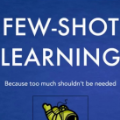Object detection has achieved substantial progress in the last decade. However, detecting novel classes with only few samples remains challenging, since deep learning under low data regime usually leads to a degraded feature space. Existing works employ a holistic fine-tuning paradigm to tackle this problem, where the model is first pre-trained on all base classes with abundant samples, and then it is used to carve the novel class feature space. Nonetheless, this paradigm is still imperfect. Durning fine-tuning, a novel class may implicitly leverage the knowledge of multiple base classes to construct its feature space, which induces a scattered feature space, hence violating the inter-class separability. To overcome these obstacles, we propose a two-step fine-tuning framework, Few-shot object detection via Association and DIscrimination (FADI), which builds up a discriminative feature space for each novel class with two integral steps. 1) In the association step, in contrast to implicitly leveraging multiple base classes, we construct a compact novel class feature space via explicitly imitating a specific base class feature space. Specifically, we associate each novel class with a base class according to their semantic similarity. After that, the feature space of a novel class can readily imitate the well-trained feature space of the associated base class. 2) In the discrimination step, to ensure the separability between the novel classes and associated base classes, we disentangle the classification branches for base and novel classes. To further enlarge the inter-class separability between all classes, a set-specialized margin loss is imposed. Extensive experiments on Pascal VOC and MS-COCO datasets demonstrate FADI achieves new SOTA performance, significantly improving the baseline in any shot/split by +18.7. Notably, the advantage is most announced on extremely few-shot scenarios.
翻译:近十年来,检测对象的工作取得了显著的进展。然而,由于在低数据制度下深层次学习通常会导致地貌空间的退化,探测新类的样本数量不多,仍然具有挑战性,因为低数据制度下的深层学习通常会导致地貌空间的退化。现有的工程采用整体微调模式来解决这个问题,模型首先在拥有大量样品的所有基类上进行预先训练,然后用来刻出新类的地貌空间。尽管如此,这一模式仍然不完善。调试,一个新类可能隐含地利用多个基类的知识来构建其地貌空间,这导致地貌空间的分散,从而破坏阶级之间的分离。为了克服这些障碍,我们建议采用两步制微调的微调框架,即通过协会和DIscriate(FADI)探测少发的物体,为每个新类建立一个有区别的空间空间空间空间空间空间空间空间空间空间空间空间空间空间空间空间空间,然后通过明确模仿某个基级之间的直径直径。


